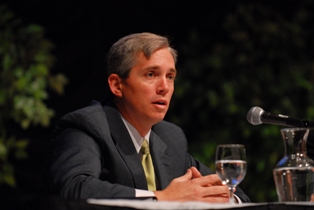
The annual conference, attended by over 800 government officials, policy and technical experts, academics, and journalists from around the world, is a premier event in the nuclear non-proliferation field. Sell took the opportunities afforded by the conference theme, 'Tomorrow's Solutions', to put into context the US administration's view of the future of the nuclear fuel cycle through the Global Nuclear Energy Partnership (GNEP), and the future of the strategic nuclear deterrent under its Reliable Replacement Warhead (RRW) initiative.
Pointing to forecast increases of nearly 60% in world energy demand by 2030, and a near doubling of electricity demand over the same period, Sell described nuclear power as the only mature technology with significant potential to provide large amounts of "completely emissions free" baseload generation to meet the need.
The two historic challenges faced by nuclear power - waste management and proliferation risk - were being addressed and minimized through GNEP, he said. "Together, the policies represented in RRW and GNEP seek to enable a world where nuclear power becomes the primary global source of electricity."
GNEP represented a major change for US civilian nuclear policy, he said. The useable material in spent nuclear fuel and surplus fissile material from weapons would be seen as potential assets rather than liabilities to be buried. "No longer will the US government be casting a baleful eye on the rest of the world's reprocessing activities," the deputy secretary noted. The international fuel leasing scheme and the form of recycling envisioned under GNEP were of particular importance from the non-proliferation point of view, according to Sell.
The policy of reducing the number of stockpiled nuclear warheads through RRW and increasing the use of nuclear power through GNEP were strategically and operationally interlinked, according to Sell. Reductions in weapons stockpiles would release uranium and plutonium to be used as reactor fuel, while permanently reducing the amount of weapons useable material. Meanwhile, the science and technology developed for stockpile stewardship and the RRW would be applicable to civilian nuclear power enterprises. Sell even envisaged the expansion of GNEP and its assimilation into "national norms" ultimately leading to further reductions in nuclear weapons.
Further information
Carnegie Endowment for International Peace
US Department of Energy: The full text of Clay Sell's speech
WNA's Avoiding Weapons Proliferation information papers
WNA's US Nuclear Power Industry information paper
Clay Sell sells nuclear to Carnegie Endowment
"No person can be serious about climatechange without being serious about greatly expanding nuclear power," said US deputy energy Secretary Clay Sell.




_47120.jpg)
_23621.jpg)

_63865.jpg)





